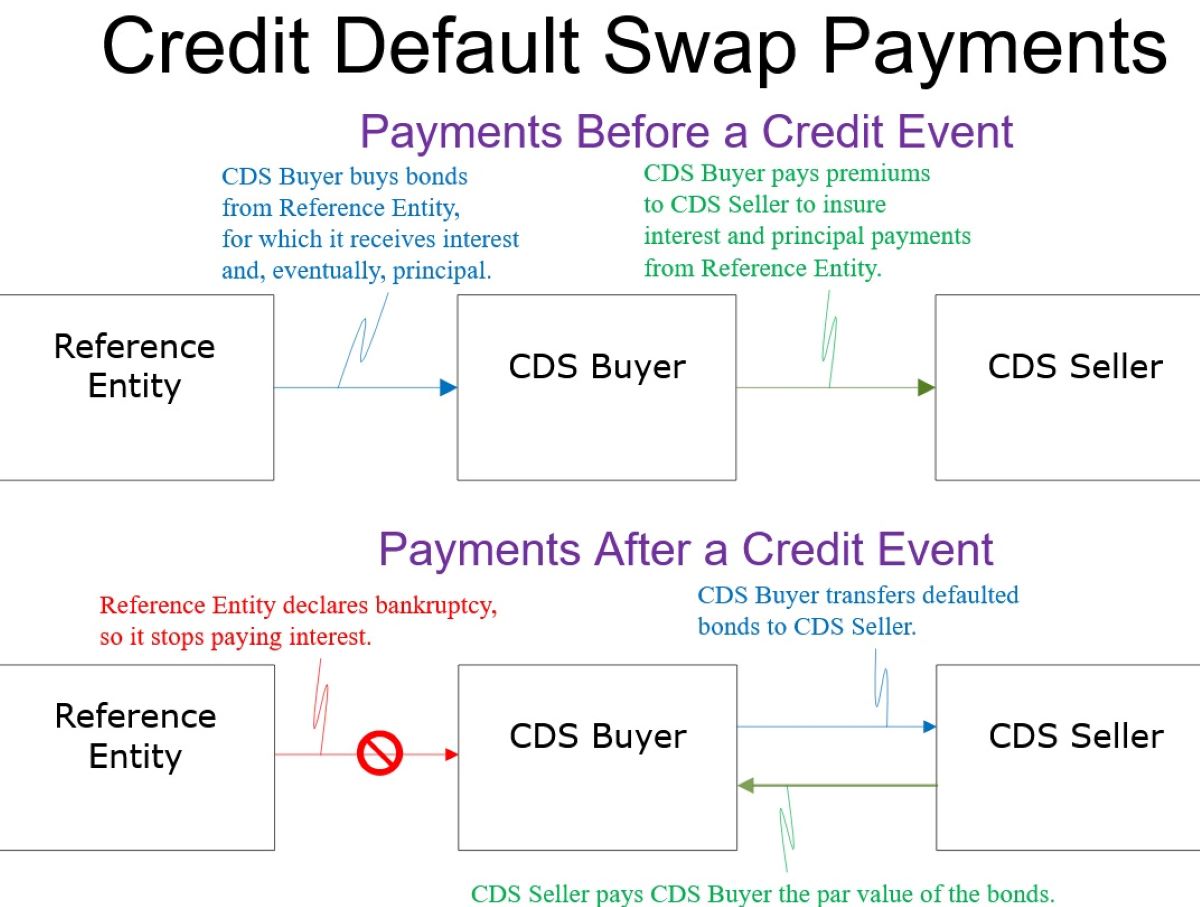

Finance
How Many Flex Loans Can You Have?
Modified: February 21, 2024
Find out how many flex loans you can have and manage your finances effectively with expert tips and advice. Explore your options and make informed decisions.
(Many of the links in this article redirect to a specific reviewed product. Your purchase of these products through affiliate links helps to generate commission for LiveWell, at no extra cost. Learn more)
Table of Contents
Introduction
Flex loans, a popular financial tool, are designed to provide individuals with quick access to funds for unexpected expenses or financial emergencies. These loans offer flexibility in repayment, allowing borrowers to withdraw funds as needed and repay the balance over time. However, managing multiple flex loans can present unique challenges and considerations.
In this comprehensive guide, we will explore the intricacies of flex loans and shed light on the legal restrictions, impact on credit scores, and strategies for effectively managing multiple flex loans. Whether you're considering obtaining a flex loan or already have multiple flex loans in your financial portfolio, understanding the implications and best practices is crucial for making informed decisions and maintaining financial stability.
Navigating the landscape of flex loans requires a nuanced understanding of their mechanics, legal framework, and potential consequences. By delving into these aspects, this guide aims to equip readers with the knowledge and insights necessary to navigate the world of flex loans with confidence and prudence. Let's embark on this enlightening journey to unravel the complexities of flex loans and their implications for borrowers.
Understanding Flex Loans
Flex loans, also known as flexible loans or line of credit loans, are a form of open-ended borrowing that provides individuals with access to a predetermined credit limit. Unlike traditional installment loans, flex loans do not have a fixed repayment schedule. Instead, borrowers can withdraw funds as needed, up to their approved credit limit, and are only required to make minimum payments based on the outstanding balance. This flexibility makes them a convenient option for managing unpredictable expenses and cash flow fluctuations.
Typically, flex loans are unsecured, meaning they do not require collateral. This aspect can make them more accessible to a wider range of borrowers, as they do not need to put up assets such as a home or vehicle as security. However, the convenience and accessibility of flex loans often come with higher interest rates compared to traditional secured loans, reflecting the increased risk for the lender.
One of the defining features of flex loans is the revolving credit structure, similar to a credit card. As borrowers repay the outstanding balance, the available credit is replenished, allowing them to borrow again without the need for reapplying. This ongoing access to funds can be beneficial for managing ongoing or unexpected expenses, providing a safety net for financial challenges that may arise.
It’s important to note that while flex loans offer flexibility in borrowing and repayment, they also come with the potential for high-interest costs if not managed prudently. Borrowers should carefully consider their financial situation and ability to make timely repayments before utilizing a flex loan to avoid falling into a cycle of debt.
Understanding the mechanics and implications of flex loans is essential for making informed borrowing decisions. As we delve deeper into the realm of flex loans, we will uncover the legal restrictions governing these financial instruments and their impact on credit scores, shedding light on the multifaceted nature of managing multiple flex loans.
Legal Restrictions on Flex Loans
While flex loans offer flexibility and convenience, it’s crucial to understand the legal framework governing these financial products. The regulations surrounding flex loans vary by state and are aimed at protecting consumers from predatory lending practices and excessive interest rates.
Some states have implemented strict regulations on flex loans, including interest rate caps and limitations on fees to safeguard borrowers from falling into cycles of debt. For instance, certain states impose maximum allowable interest rates on flex loans to prevent lenders from charging exorbitant fees that could burden borrowers with overwhelming debt. Additionally, states may require lenders to disclose all terms and fees associated with flex loans upfront, ensuring transparency and empowering borrowers to make well-informed decisions.
It’s important for individuals considering or managing multiple flex loans to familiarize themselves with the specific regulations in their state to ensure compliance and protect their financial well-being. By understanding the legal restrictions and protections in place, borrowers can navigate the landscape of flex loans with greater confidence and awareness of their rights.
Furthermore, staying informed about the legal framework surrounding flex loans can help borrowers identify any potential predatory practices and take appropriate action to address them. Being aware of consumer protections and rights can empower individuals to advocate for fair treatment and seek recourse if they encounter unjust lending practices.
As we explore the legal landscape governing flex loans, it’s essential to recognize the significance of adhering to state regulations and leveraging consumer protections to safeguard financial stability. By shedding light on the legal restrictions and safeguards surrounding flex loans, borrowers can make informed decisions and effectively manage multiple flex loans while mitigating potential risks.
Impact on Credit Score
Managing multiple flex loans can have a significant impact on an individual’s credit score, influencing their overall creditworthiness and financial standing. When borrowers take out multiple flex loans, their credit utilization ratio may increase, potentially affecting their credit score. The credit utilization ratio is the amount of credit being used relative to the total credit available, and a high ratio can signal higher risk to lenders.
Additionally, each new flex loan application may result in a hard inquiry on the borrower’s credit report, which can cause a temporary dip in their credit score. Multiple hard inquiries within a short period can raise concerns for lenders and may be interpreted as a sign of financial distress or overextension. As a result, borrowers should be mindful of the impact of frequent loan applications on their credit profile.
Moreover, the repayment history of multiple flex loans plays a crucial role in shaping an individual’s credit score. Timely payments can bolster the credit score, demonstrating responsible financial management, while missed or late payments can lead to negative marks on the credit report, potentially lowering the credit score.
It’s imperative for individuals managing multiple flex loans to prioritize timely repayments and maintain a healthy credit utilization ratio to mitigate adverse effects on their credit score. By staying vigilant about repayment schedules and effectively managing their overall debt burden, borrowers can work towards preserving and enhancing their creditworthiness.
Understanding the impact of multiple flex loans on credit scores underscores the importance of strategic financial management and responsible borrowing practices. By proactively monitoring their credit reports and implementing prudent debt management strategies, borrowers can navigate the complexities of managing multiple flex loans while safeguarding their credit standing.
Managing Multiple Flex Loans
Effectively managing multiple flex loans requires a strategic approach to financial organization and responsible borrowing practices. To navigate this scenario successfully, borrowers should prioritize clear communication with lenders, diligent financial planning, and proactive debt management strategies.
One key aspect of managing multiple flex loans is maintaining open lines of communication with lenders. If borrowers anticipate challenges in making timely payments or require adjustments to their repayment schedules, it’s essential to engage with lenders proactively. Many lenders are willing to work with borrowers to find viable solutions, such as restructuring payment plans or negotiating feasible terms, to ensure successful loan management.
Additionally, creating a comprehensive budget and financial plan can empower individuals to effectively manage multiple flex loans. By assessing their income, expenses, and debt obligations, borrowers can gain a clear understanding of their financial standing and develop strategies to allocate resources efficiently. Prioritizing high-interest debt and making consistent, on-time payments can help prevent the accumulation of excessive interest and mitigate the risk of falling into a cycle of debt.
Consolidating multiple flex loans into a single, manageable payment through a debt consolidation program or loan may also be a viable option for borrowers seeking to streamline their debt obligations. By consolidating multiple loans, individuals can simplify their repayment process and potentially secure more favorable terms, reducing the overall financial burden and enhancing their ability to stay on top of their debt obligations.
Furthermore, seeking financial counseling or guidance from reputable sources can provide valuable insights and strategies for managing multiple flex loans effectively. Professional financial advisors or credit counselors can offer personalized recommendations and actionable steps to help borrowers navigate the complexities of managing multiple loans while maintaining financial stability.
By adopting a proactive and disciplined approach to managing multiple flex loans, individuals can mitigate the potential challenges associated with juggling multiple debt obligations. Through effective communication, prudent financial planning, and leveraging available resources, borrowers can work towards successfully managing their flex loans and achieving greater financial security.
Conclusion
As we conclude our exploration of the intricacies of flex loans and the implications of managing multiple loans, it becomes evident that a nuanced understanding of these financial instruments is essential for borrowers seeking to navigate the complexities of borrowing responsibly. Flex loans offer a flexible and accessible means of obtaining funds, but managing multiple loans requires careful consideration and proactive financial management strategies.
By comprehending the legal restrictions governing flex loans, borrowers can ensure compliance with state regulations and leverage consumer protections to safeguard their financial well-being. Understanding the impact of multiple flex loans on credit scores underscores the importance of prudent debt management and responsible borrowing practices to preserve and enhance creditworthiness.
Effectively managing multiple flex loans necessitates clear communication with lenders, diligent financial planning, and proactive debt management strategies. By engaging in open dialogue with lenders, creating comprehensive budgets, exploring debt consolidation options, and seeking professional financial guidance, borrowers can navigate the challenges of managing multiple loans with confidence and prudence.
Ultimately, the management of multiple flex loans requires a proactive and disciplined approach to ensure financial stability and mitigate potential risks. By staying informed, communicating effectively, and implementing prudent financial strategies, borrowers can navigate the complexities of multiple flex loans while working towards achieving greater financial security and well-being.
As borrowers continue their financial journey, it is crucial to remain vigilant, seek knowledge, and adapt to changing circumstances to maintain a healthy financial outlook. With a thoughtful and informed approach, managing multiple flex loans can be navigated successfully, empowering individuals to make sound financial decisions and achieve long-term financial wellness.














